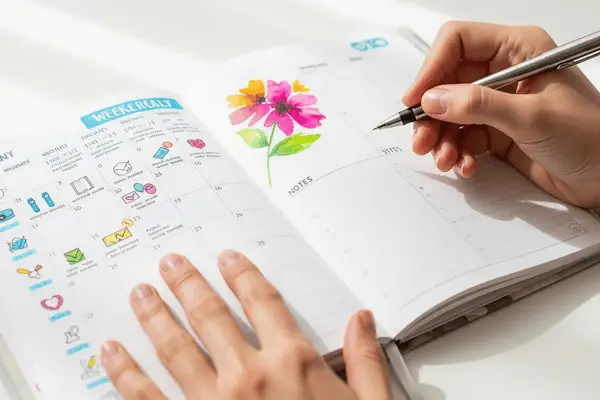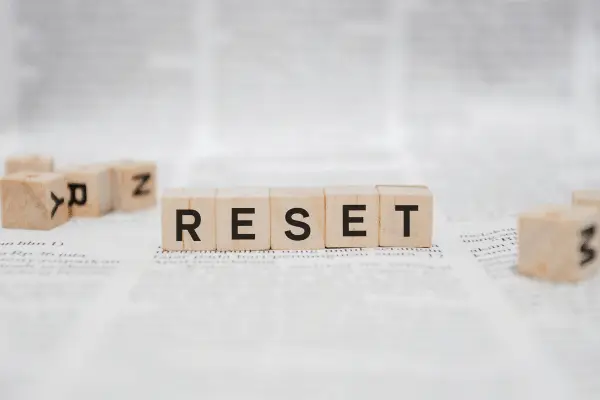Modern work isn’t short on stress. The pace, pressure, and constant change can leave even the most capable leaders running on fumes, mentally juggling performance demands while managing people, priorities, and personal responsibilities.
Yet amid the noise, one truth remains clear: how we manage stress directly shapes how we lead.
When burnout becomes the norm, cultures suffer. Energy drops, empathy fades, and decision-making narrows. But when leaders prioritise wellbeing, their own and their team’s, they don’t just reduce stress; they strengthen performance, trust, and long-term impact.
This is where corporate wellness solutions come in and not as another HR initiative, but as a leadership advantage.
“When leaders
prioritise wellbeing,
they don’t
just reduce burnout,
they strengthen
performance.”
Why Stress Management Matters More Than Ever

Workplace stress is more than a feeling — it’s a risk factor. The World Health Organisation now recognises burnout as an occupational phenomenon, and Australian data shows stress-related compensation claims are rising year on year. Anxiety, depression, and exhaustion are costing billions in lost productivity and turnover.
For leaders, the ripple effect is profound. When energy runs low, so does perspective. When stress runs high, connection and creativity often disappear.
What would change if we treated stress not as a weakness to manage, but as a signal to redesign how we work?
The Hidden Costs of Workplace Stress
Unchecked stress drains more than individual wellbeing; it silently erodes culture. Presenteeism, absenteeism, and disengagement all rise when employees feel unsupported or overwhelmed.
The Australian HR Institute reports that one in three employees experience symptoms of burnout. Beyond lost productivity, the human toll is harder to measure, strained relationships, declining confidence, and the quiet withdrawal of once-energised leaders.
A culture that rewards overextension rather than restoration is not sustainable. It’s time to shift from coping to prospering.
From Coping to Thriving
Stress is inevitable. Burnout is not. The difference lies in design.
When individuals and organisations build structures that support wellbeing, stress becomes a growth signal — a prompt to adjust, reset, and realign.
At Wellbeing by Design, we help leaders and teams create systems that work for humans — not against them. Through the lens of our Signature Model (Wellbeing → Self → Structure → Impact → Innovation → Inspiration), stress becomes a catalyst for clarity and sustainable performance.
The Wellbeing by Design Approach: From Self to Structure to Impact
Effective corporate wellness solutions start with self-awareness and extend to system-wide alignment. You can’t embed what you don’t embody.
When leaders strengthen their own mental fitness, they model calm under pressure and build teams that mirror that resilience. When organisations back this up with supportive structures, flexible work design, psychological safety, and wellbeing-first policies, performance and wellbeing can finally coexist.

From Individual Resilience to Organisational Systems

Too often, wellbeing programs focus on the individual, meditation sessions, gym memberships, or resilience workshops. While valuable, they can unintentionally signal that stress is a personal failing rather than a systemic issue.
Real change happens when leaders ask, “What in our systems is causing stress — and what can we redesign?”
That’s where co-designed corporate wellness solutions come in, integrating personal growth with structural change. By aligning leadership behaviours, work design, and culture, organisations can create environments where wellbeing and performance reinforce each other, not compete.
10 Proven Techniques to Stress Less
Here are ten evidence-based ways to reduce stress and rebuild focus for yourself, your team, and your organisation.
1. Reclaim Control: Design Your Day, Don’t Just Survive It
Stress thrives in chaos. Leaders can reclaim agency by designing their day intentionally and aligning priorities with energy, not just urgency.
Time-blocking, task batching, and clear boundaries protect focus and reduce decision fatigue.
Reflection: What would change if you treated your calendar as a wellbeing tool, not a to-do list?

2. Prioritise Recovery Like a Leader
High performance depends on recovery, not endurance.
Research from Harvard Business Review shows that strategic rest increases creativity and problem-solving.
Micro-breaks, digital downtime, and proper sleep hygiene aren’t value adds, they’re leadership strategies.
Burnout prevention begins with permission to pause.
3. Identify the Early Warning Signs
Burnout doesn’t happen overnight — it builds quietly.
Perhaps you’re short-tempered, skipping meals, or finding it harder to focus. These small signs are messages, not mistakes.
Leaders who act early by taking time to reflect, reset, or seek support can prevent long-term exhaustion and preserve performance.
4. Practice Micro-Moments of Mindfulness
You don’t need an hour of meditation to reset your nervous system. Try one-minute grounding practices by noticing your breath, stretching, or stepping outside.
Mindfulness lowers cortisol, improves attention, and brings leaders back to presence this is a critical skill when pressure mounts.

5. Reconnect with Purpose
When work feels meaningful, stress feels manageable.
Clarifying your “why” realigns effort with values and renews motivation.
In coaching, I often ask: “What truly matters right now, and what’s noise?”
Purpose gives context to challenge and helps leaders navigate uncertainty with steadier footing.
6. Build Supportive Structures
Personal resilience only goes so far without organisational support.
Workplaces that integrate wellbeing into their systems with flexible hours, realistic workloads, and inclusive communication, see higher engagement and lower turnover.
It’s time to move beyond wellness programs to wellbeing-centred leadership where policies protect people and enable performance.
7. Create Healthy Boundaries
Boundaries aren’t barriers they’re bridges to balance.
Setting clear expectations around communication, availability, and workload prevents burnout and role conflict.
Leaders who model boundaries show their teams it’s okay to switch off, and that rest is part of responsibility.

8. Move and Breathe
Movement is medicine. Even short bursts of physical activity regulate mood and energy.
Encouraging walking meetings, stretch breaks, or lunchtime movement not only supports wellbeing but fosters creativity and connection.
9. Foster Connection and Belonging
Humans are wired for connection. Teams that feel psychologically safe are more innovative and resilient.
Check-ins, peer recognition, and genuine appreciation transform workplace climates faster than any policy.
When people feel seen and supported, stress loses its grip.
10. Reflect, Reset, and Redesign
True change begins with awareness.
Take time each month to reflect on what’s working, what’s not, and where do you need to reset?
This simple rhythm helps prevent overload and keeps values aligned with actions.
For many leaders, guided support accelerates this process. That’s why the Reset by Design coaching program helps you pause, re-prioritise, and create a plan to lead with calmness, clarity, and confidence again.

Case in Point: A Leader Who Learned to Reset

When Sarah, a senior manager in community services, first reached out, she described feeling constantly “on.” Her team relied on her, but her health and focus were slipping. Through 1-1 coaching Sarah learned to recognise her stress triggers, reset her priorities, and establish practical structures, protected time for strategic thinking, wellbeing breaks, and clearer delegation.
Within eight weeks, her energy stabilised, her communication improved, and her team reported feeling more supported and engaged. The result wasn’t just less stress, it was renewed leadership impact.
From Stress to Strength: Embedding Wellness into Leadership Culture
Reducing stress isn’t just good for people, it’s good for business.
Research by Deloitte shows that organisations investing in wellbeing see a 5:1 return through improved productivity, reduced absenteeism, and stronger retention.
When wellbeing becomes part of the culture, people don’t just work harder, they work better.
Leaders who model calmness, prioritise rest, and invite open conversations about stress create environments where others feel safe to do the same. That’s real culture change.
5 in 1 return
Co-Designing Sustainable Wellness Solutions

Every workplace is different. That’s why cookie-cutter wellness programs rarely deliver lasting results.
Sustainable change comes from co-design, listening to what people need, testing small shifts, and scaling what works.
When leaders partner with employees to shape solutions, they build trust and ownership. Together, they move from short-term fixes to systems that sustain wellbeing, performance, and impact.
Your Next Step: Reset by Design
If you’ve been leading on empty, constantly giving, rarely recharging it might be time for a reset.
The Reset by Design Coaching Program helps leaders and professionals navigate pressure, prevent burnout, and rebuild energy and direction with science-backed tools.
You’ll gain practical strategies to stress less, focus more, and lead with renewed confidence.
🌿 Explore Reset by Design → Book a call
What Would Change if You Stressed Less and Led with Clarity and Composure?
Because when leaders thrive, so do their teams.
Stress doesn’t have to be the soundtrack of success — with the right mindset and systems, you can design a different way to live, work, and lead.

FAQs on Corporate Wellness and Stress Management
1. What are the most effective corporate wellness solutions for reducing burnout?
The most effective programs address both individual habits and organisational systems. While tools like mindfulness and coaching support personal awareness, the real change happens when workplaces look at how work is designed — flexibility, leadership behaviours, psychological safety, and workload expectations. Sustainable wellness combines personal growth with structural change.
2. How can leaders recognise the early signs of burnout — in themselves or their teams?
Early signs often appear as subtle shifts: irritability, fatigue, declining motivation, or quiet withdrawal. You might notice more mistakes, reduced focus, or a loss of empathy. In teams, it can show up as tension, absenteeism, or silence in meetings.
3. Why is burnout prevention a leadership issue, not just a wellbeing one?
Because leadership sets the tone for how pressure is handled and what’s considered “normal.” When leader’s role-model rest, boundaries, and honest conversations about workload, they create psychological safety for others to do the same. Burnout prevention isn’t about being less ambitious, it’s about leading in ways that sustain people and performance.
4. What’s the difference between resilience and a corporate wellness strategy?
Resilience focuses on how individuals recover from challenges. A corporate wellness strategy focuses on how systems prevent unnecessary strain in the first place. Both matters, but only together do they build workplaces where people can truly thrive. A strong strategy aligns culture, leadership, and wellbeing practices so resilience becomes easier to maintain.
5. How can coaching help leaders reduce stress and prevent burnout?
Coaching provides a structured space to pause, reflect, and reset. It helps leaders identify what’s driving their stress, clarify priorities, and design healthier patterns of work and leadership. Through programs like Reset by Design, leaders learn practical tools to restore energy, set boundaries, and create habits that support both wellbeing and impact.
References & Evidence Sources (APA Style)
- Australian HR Institute (2024). Workplace Wellbeing and Burnout Report. AHRI.
- Deloitte Australia (2023). Wellbeing at Work: The ROI of Mental Health Programs.
- HBR Staff (2022). “The Case for Recovery in High-Performance Cultures.” Harvard Business Review.
- World Health Organization (2019). Burn-out as an Occupational Phenomenon: ICD-11 Guidelines.
- Curtin University (2024). SMART Work Design Framework. Centre for Transformative Work Design.







